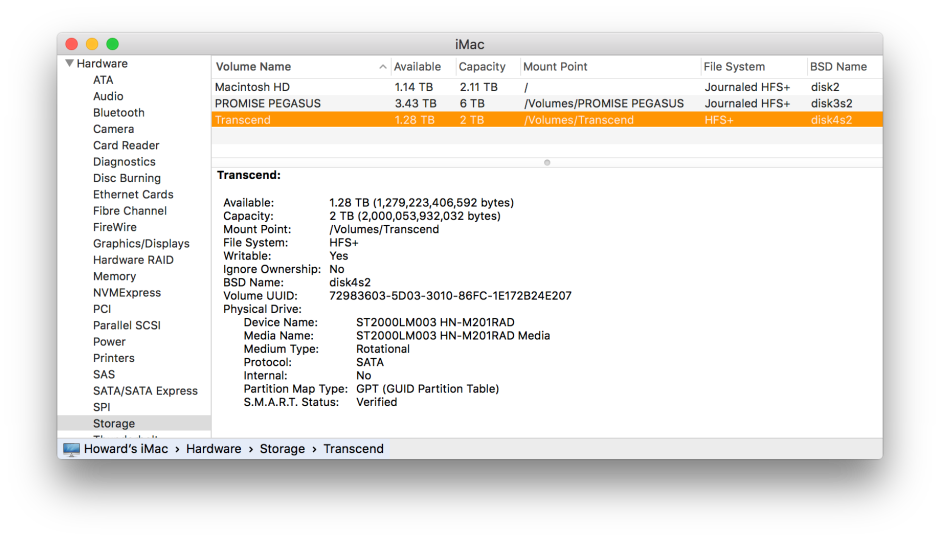I have fallen for it too. I was yearning for a really affordable external solid-state disk (SSD) and spotted a product claiming 2 TB of storage accessible over Thunderbolt for under £200. I bought it, then realised it was of course a 2.5″ slimline hard disk. I wasn’t disappointed – it is a Transcend, and has justified its price several times over – but just a tad sad it wasn’t SSD.
It doesn’t help that product listings often confound external SSDs with these slimline hard drives. Search Amazon, or any other major online retailer, for ‘external ssd’ and you can be fairly sure that some of the products offered will be hard drives, not SSDs. Manufacturers don’t always help either, naming products like ‘USB 3.0 external drive’ rather than coming clean.
When buying, you can be fairly confident that if you are paying around $/£/€ 50 for 1 TB, then it is a hard drive. An SSD of that capacity is likely to cost nearer $/£/€ 350, maybe more.
But what if you think that you have got the bargain of the year, an SSD for a hard drive price? How can you tell them apart?
For external drives, it can be remarkably difficult. Without resorting to the command line, your best bet is a System Report obtained through the About This Mac… dialog. Select the Storage item in the Hardware list, and then the drive which you wish to identify. The important information is then found in the Physical Drive section in the lower part of the view.

When connected by Thunderbolt (or internally), a hard drive should be listed there with the Medium Type Rotational (this seems a bit like calling a helicopter a rotary-winged aircraft, perhaps), but an SSD will be identified as such.
However, when connected by USB – even USB 3.0 – there may be no entry for the Medium Type at all, as OS X does not know exactly what is connected. You might be lucky with a Device Name or Media Name which contains HDD or similar. But if the drive wants to be secretive, what it reports might be useless in terms of identification.
Another useful test is to listen carefully to the drive when it is working hard, perhaps copying files across to it. SSDs are completely silent, but even the quietest compact hard drive can usually be heard, or felt, when active.
Ultimately you can test the drive’s speed: hard drives will normally return read speeds below 100 MB/s, whereas an SSD should be very much faster, over 300 MB/s.
If you do find a vendor selling external SSDs of 1 TB capacity for under $/£/€ 100, please let me know. I might buy a few boxes…
